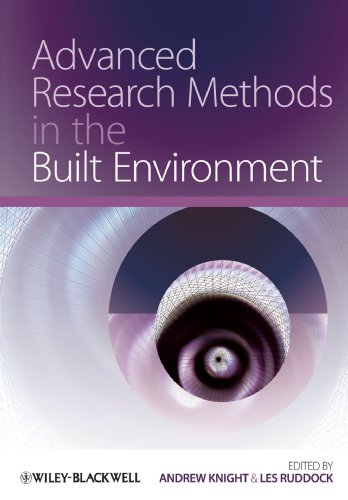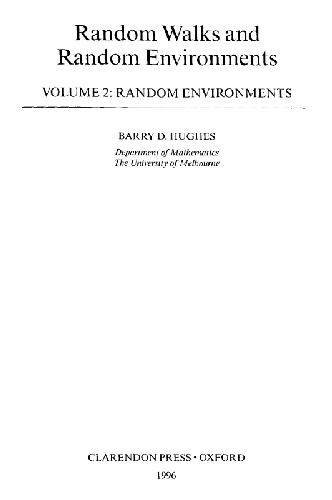Andrew Knight, Les Ruddock1405161108, 9781405161107
Table of contents :
Advanced Research Methods in
the Built Environment……Page 2
Foreword……Page 13
Introduction……Page 15
Contributors……Page 21
Introduction……Page 25
Research strategy and design……Page 27
The dominant research paradigm within construction
management……Page 28
Discussion: The implications of methodological uniformity……Page 30
The case for methodological pluralism in construction
management research……Page 32
Challenges in undertaking multi-paradigm research……Page 33
Conclusions……Page 34
Note……Page 35
References……Page 36
Introduction……Page 38
A sketch of architectural design……Page 39
The structure of architectural research……Page 41
Space syntax and the social logic of space……Page 42
Conclusion……Page 49
References……Page 51
The epistemology of legal scholarship……Page 52
In search of a methodology……Page 55
The cultural dimension……Page 59
References……Page 61
What is feminist research?……Page 63
Locating feminism in the social sciences……Page 64
Locating the feminist researcher……Page 66
Ethical considerations……Page 67
Standpoint epistemologies……Page 68
Oral histories and diaries and women’s voices……Page 69
Can anyone be a feminist researcher?……Page 70
References……Page 72
General economic models……Page 75
Relationships between economic variables – econometrics……Page 76
Approaches and applications in the construction sector……Page 80
Conclusions……Page 85
References……Page 86
Introduction……Page 88
Concepts……Page 89
Classical epistemology……Page 90
Modern epistemology……Page 92
Postmodernism and the critique of epistemology……Page 95
Conclusion……Page 96
References……Page 98
The philosophy behind theories……Page 99
Scientific theories……Page 100
Working as a scientist……Page 101
The plot gets complex……Page 102
Testing social science theories……Page 103
Building new theories……Page 107
References……Page 108
What is grounded theory?……Page 110
Substantive to formal theory……Page 111
Data collection and analysis……Page 113
The theory building procedure……Page 114
Coding and comparison groups……Page 115
Grounded theory challenges……Page 117
Scope and limitations of theory……Page 118
A good theory……Page 119
Summary……Page 120
References……Page 121
Case study research: An overview……Page 123
Designing case studies……Page 124
Collecting the information……Page 125
Analysing the information……Page 127
Example……Page 128
Conclusions……Page 132
Acknowledgement……Page 133
References……Page 134
Introduction……Page 135
The interview method……Page 136
Interviews in the built environment disciplines……Page 139
Planning, conducting and analysing interviews……Page 140
Further reading……Page 144
Introduction……Page 146
Construction……Page 147
Attitude scales……Page 148
Sampling……Page 149
Administration……Page 150
Coding missing values……Page 151
Factor analysis……Page 152
Summary……Page 157
References……Page 158
Introduction……Page 159
Comparison of software……Page 160
Methodology and software……Page 161
Learning to use CAQDAS……Page 163
The quality of qualitative research……Page 164
References……Page 165
Introduction……Page 168
The essence of sampling theory……Page 169
Other common forms of hypothesis test……Page 171
Inference and causality – basic regression models……Page 172
Multiple regression models……Page 174
Concluding remarks……Page 177
References……Page 178
First concepts……Page 179
System dynamics……Page 181
Network structure and nomenclature……Page 182
System architecture design……Page 184
Recent advances in construction and civil engineering research……Page 190
Conclusion: Why neuro-fuzzy models?……Page 191
References……Page 193
Introduction……Page 195
Why choose social network analysis?……Page 196
Concepts and terminology……Page 197
Software for the analysis of networks……Page 202
Conclusion……Page 204
References……Page 205
Defining the thesis……Page 207
Having a clear research focus……Page 208
Developing and managing the draft thesis……Page 209
Producing the final version of the thesis……Page 212
Knowing the thesis and preparing for the viva voce……Page 213
Further reading……Page 216
Writing good journal papers……Page 217
Elements of a journal submission……Page 222
Editorial processes……Page 226
Conclusion……Page 229
References……Page 230
Inner self……Page 231
Personal environment……Page 235
The research project……Page 236
Research environment……Page 237
Conclusion: Keeping going and succeeding……Page 238
References……Page 239
Concept and context……Page 240
Conclusion……Page 250
References……Page 251
Index……Page 253







Reviews
There are no reviews yet.